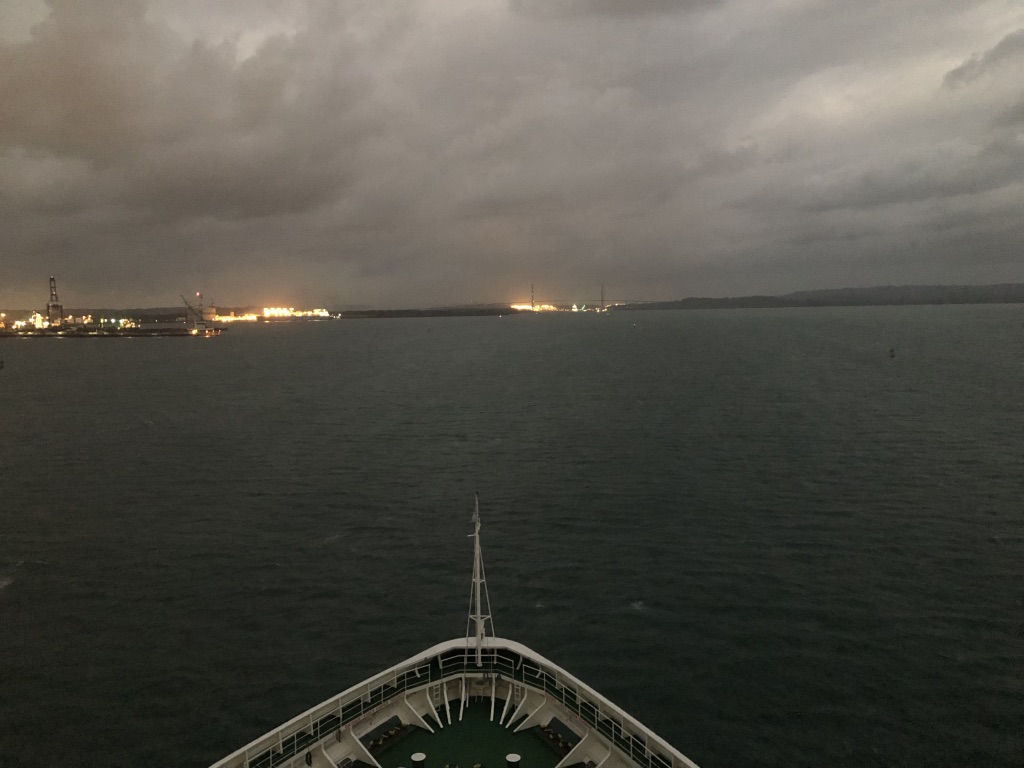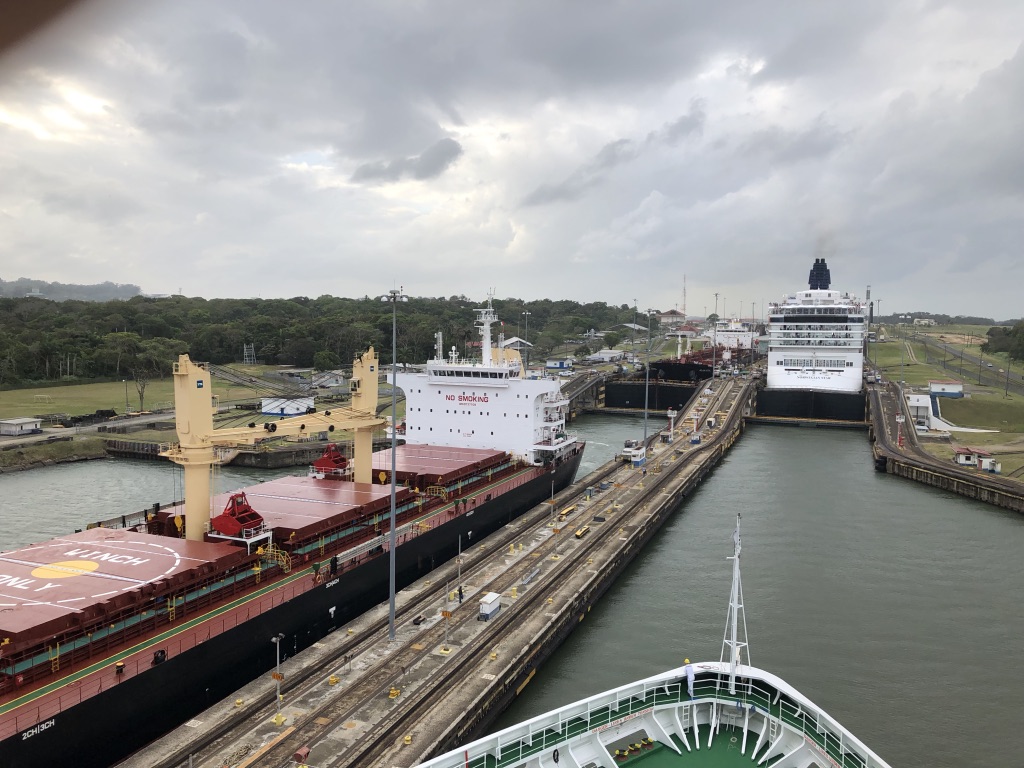I’ve been neglecting this blog. I can’t blame You-Know-What, as the last post I made was on March 1st and I didn’t go into isolation until 19th March, just ahead of the official lockdown on 23rd. Anyway, I came across the journal I kept on my Round the World Voyage last year and thought it would be nice to revisit it since it could be a very long time before I can travel again – then thought you might like to see it too.
I can’t find the notebook I wrote in at the beginning – Amsterdam-Azores-Barbados-Aruba – but I can always tack that part on at the end if it turns up. Meanwhile, today we begin with The Panama Canal – not the most beautiful of places but certainly interesting. So here’s what I wrote.
It’s 5.30am and I am about to go up to the top deck as we are scheduled to meet the pilot about now and are due to reach the first lock at 7am. From my cabin window I can see the lights of a long line of ships in the dark, queuing for their turn to transit. Passing through the canal is an expensive business – for a cruise ship between $100,00 and $300,000 depending on number of beds.
I managed to get prime position at the prow where I stood for two-and-a-half hours. We moved so slowly it was hard to tell we were moving at all. I hadn’t had so much as a cup of tea and had forgotten my binoculars and, more importantly, my mozzie protection. It was pitch dark for the first half hour and we were guided into the channel between red and green lights.

With dense jungle either side it’s not hard to imagine why so many thousands of the canal builders died of malaria and yellow fever during the period when the French began building. When the Americans took over the construction they decided to eliminate the mosquitoes as a priority.
The woman standing next to me told me she had once been a passenger on the cruise ship going through the lock in front of us – the Norwegian Star. She’d been en route from Melbourne to Tasmania but the ship broke down after leaving Melbourne and had to be towed back for repairs. She said it was a horrible ship. What a coincidence for her to encounter it again here on the other side of the planet.
I am now writing this back in my cabin after a well-deserved breakfast and a gallon of coffee. I’ll venture up again to witness our arrival in the lake. once I have some circulation back in my legs after standing squashed in one spot for so long.
To transit the canal, ships can’t use their own power but are dragged through by mules – little grey trains that run along tracks beside the incredibily narrow locks – so narrow it seems you’d need to grease the sides of a cruise ship to get it through.

As I write this we reach the last lock before the lake and the ship has now risen to the level of the cargo ship in the channel beside us – heading the other way. It’s a grey cloudy day – the gloomiest since we left the Azores. No sun and spots of rain – yet very humid and hot – even in the early morning.
The canal is about 60 km long with three locks at the Caribbean end leading into Gatun Lake, a long cut, then the Pedro Miguel locks lead into Miraflores Lake and more locks to the Pacific and Panama City. We won’t see Panama City as there’s a national holiday.

Lake Gatun is studded with tiny islands. It seems odd to be on a rather pretty lake with container vessels and big tankers all around when it would seem more likely to see pleasure steamers and yachts.
I have been sitting on the back deck reading, but whenever the heavy clouds part, the sun is fierce and not advisable for me so I’ve retired to do some quilting in the cool of the bar and then my cabin. Actually the cabin is the perfect place for witnessing the passage through the locks as I can watch the mules being hooked up by white-helmeted men and see us sinking or rising in the lock from the cabin window while the TV has a video link to a forward view from the top deck where I was standing this morning – but is now too hot (and crowded)
We enter the last lock in late afternoon and wait to descend. Once the process starts it happens quickly and we move forward into the Pacific!
At around 8pm we dropped anchor and a vessel came alongside for bunkering, right below my cabin so I could watch them fix the ropes and connect the fuel pipes, The tanker crew disappeared while the refuelling happened. We were still attached when I got back after dinner two hours later and I must have been asleep when we raised anchor and got underway again. Next stop – Guatemala!



0 Comments